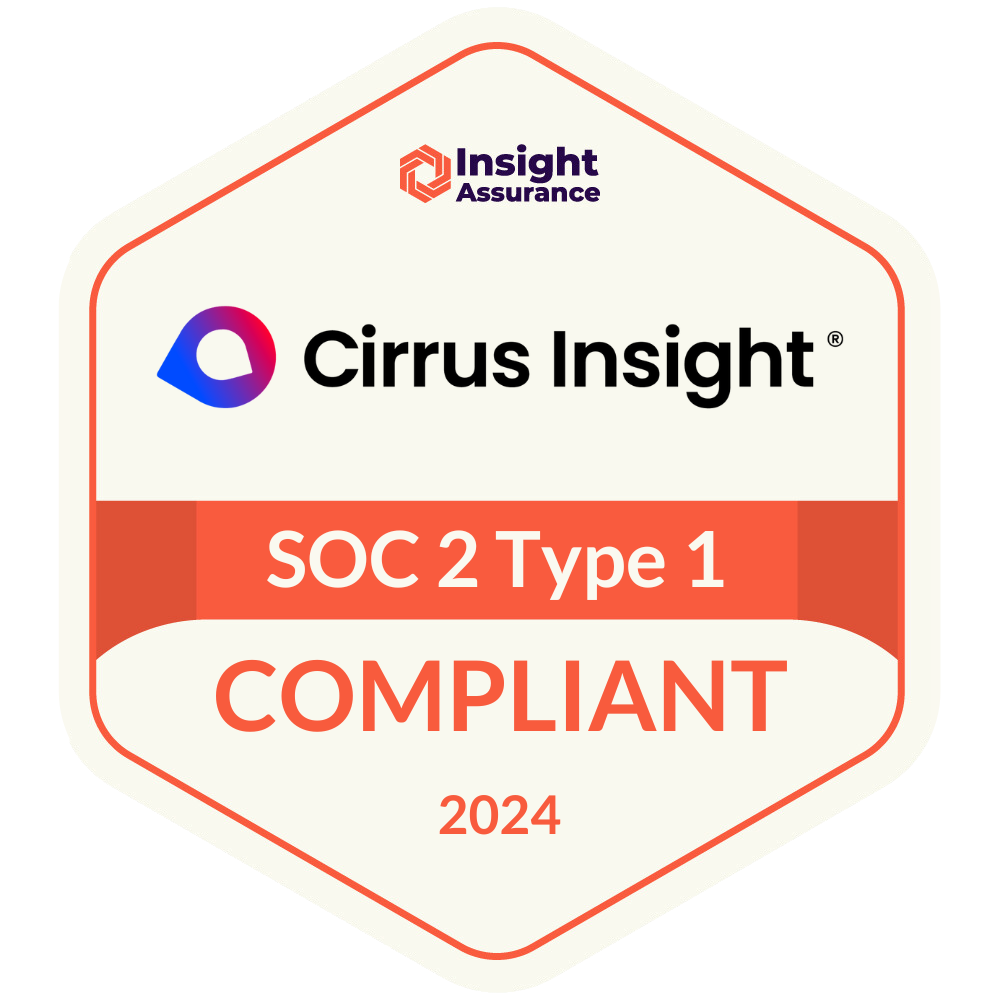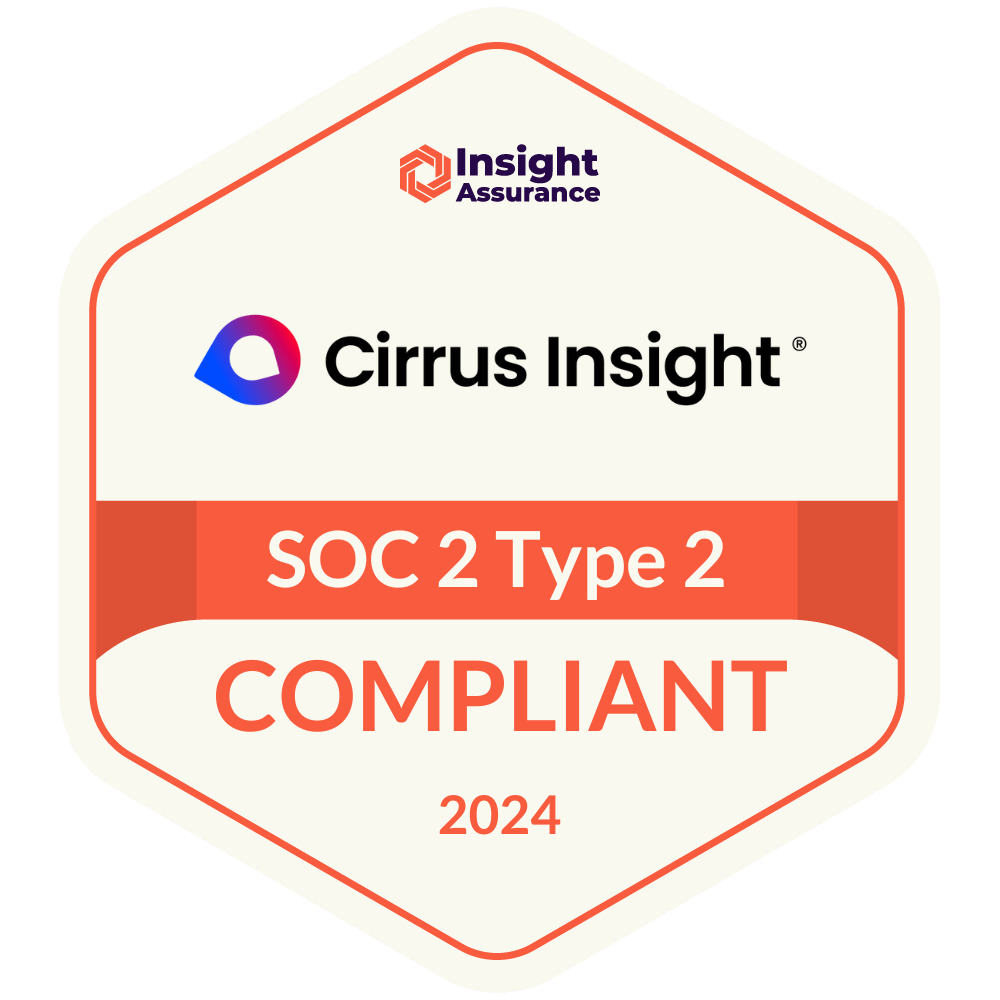- Solutions
-
Products
-
Resources
Sales Automation Tools | Cirrus Insight by Kristi Campbell View all Blog Posts >Get the App, Get the Sidebar, & Get Your Trial Going HereUnleash limitless growth opportunities by partnering with Cirrus Insight.
- Pricing
Filter By:
- All topics
- Sales Productivity
- Sales Intelligence
- Salesforce
- Sales Strategy
- Sales Prospecting
- Book More Meetings
- Best of
- Company News
- Product
- Sales Leadership
- CRM Admininstration
- Sales Metrics
- Supercharge Sales Activity
- Team Scheduling
- Admin
- serious insights
- Prospect Smarter
- Sales Activity Data
- Sales Forecasting
- Scheduling Solutions
- Prospect Faster
- Auto-Sync Everything To Your CRM
- Chrome
- Comparison
- Financial Services
- For Admins
- Getting Started
- IT & Security
- outlook
Subscribe to our Blog for the Latest Insights
Join our blog community to stay informed and receive fresh content and actionable tips directly in your inbox.
Why Sales Data Analysis Fails (And How to Easily Fix It)
When it comes to sales, our minds don’t usually jump to concepts like data sets, data collection, logical evaluation, or sales data analysis.
When most people think of sales, they picture an upbeat, maverick sales rep who woos customers on the golf course through sheer wit, charm, and natural instinct.
In reality, this fast and loose approach to sales is losing out to a more methodical approach that relies on data, not intuition, to make decisions. Data-driven sales organizations now operate more like scientists and strategists, and the results speak for themselves.
Research from McKinsey shows that companies who base their sales decisions on data are 5% to 6% more profitable than their competitors.
In order to continue driving higher revenue and profits, sales organizations must start collecting the right kinds of data, and be skilled at analyzing it in order to spot risks and opportunities for growth.
Unfortunately, most sales organizations fail to collect and extract the full value out of their data.
Before we discuss how to fix these problems, let’s first cover why sales data analysis is so important in the first place.
How Data Analysis Improves the Performance of Your Sales Organization
Accurate Sales Forecasting
The most obvious benefit of sales data analysis is the ability to predict future sales based on historical data. Unlike ambitious goal-setting, historical data gives you an accurate, realistic picture of how much your team should earn within a certain time period.
When leaders can accurately forecast what revenue will be, they can then use that knowledge to allocate resources and manage the workforce more efficiently.
Historical sales data also allows you to compare your organization’s performance to industry averages to see if you’re on track.
Performance Assessments and Incentive Plans
When sales managers have reliable data, they can create a sales forecast for each, individual sales rep, and compare their current performance to their performance in the past.
If a sales rep has unusually low performance, sales managers can focus more time on coaching and training that sales rep.
On the other hand, if a sales rep has unusually high performance, sales managers can now acknowledge and reward that rep’s hard work, and have them help train the rest of the team on their methods and tactics.
In addition, by looking at data from your CRM, you can see how reps spend their time, and identify which activities make the most impact when it comes to closing deals and generating revenue.
By collecting and analyzing sales data, managers can be more effective at correcting performance issues, setting realistic sales goals, incentivizing high performers, and motivating their team.
Increase Retention Rates Among Large Accounts
Your sales team should know who their big buyers are and be focused on taking care of them to ensure the highest customer satisfaction and retention rates possible.
You probably know who your largest accounts are, but transactional data can help you identify other accounts that are growing quickly.
Research done by Frederick Reichheld of Bain & Company shows that increasing customer retention rates by 5% increases profits by a whopping 25% to 95%.
You simply can’t afford to lose those large accounts, so you need to be able to identify them, and then make them a top priority for your team.
Increase Purchases from Smaller Accounts
According to the book Marketing Metrics, businesses have a 60% to 70% chance of selling to an existing customer, while the probability of selling to a new prospect is only 5% to 20%.
If you want to increase revenue fast, start by reaching out to accounts that purchase in small amounts or purchase infrequently. Then, dedicate time toward discovering why they aren’t buying more, and look for ways to cross-sell and up-sell products you think could meet their needs.
Pipeline Management
Better data will allow you to segment leads in your pipeline based on how profitable they are likely to be and which products similar customers buy most often. This information allows you to speed up the sales cycle and focus on the most profitable opportunities first.
Pipeline data can also allow you to identify and fix weak points and bottlenecks where leads are getting stuck, or falling out of the pipeline completely.
Why Sales Data Analysis Fails, and How to Easily Fix It
There are 2, primary reasons why sales organizations fail to extract the full value out of their data:
- Sales reps simply aren’t collecting any dataYou can only derive valuable insights from sales activity and customer data if you’re collecting it in the first place. Without this data, leaders are left to make decisions based only on guesswork and intuition.Unfortunately, sales reps rarely see the value in collecting all of this data. Their highest priority and immediate concern is closing more deals. Manual data entry is an afterthought, at best.To make things worse, the process of manually entering data into a CRM like Salesforce™ is often extremely tedious and frustrating, further decreasing the chances that your sales reps will actually take the time to do it.
- Sales reps are only collecting incomplete, inaccurate dataEven if they do see the value in entering this data, high-performing sales reps today are “crazy busy.” It’s hard for them to make time to enter accurate and thorough data into CRM systems. The best reps often cut corners, if they bother to enter data at all.Because the quality of the data is so low, managers often can’t trust it when they need it to make important decisions.While getting sales reps to enter accurate and thorough data is an uphill battle, you simply can’t afford to not have this data. The only viable solution is to find a way to eliminate manual data entry entirely and make the whole process automatic. However, until now, there has been no reliable technology capable of doing this.
ZynBit Makes Data Entry Painless and Automatic
ZynBit is a tool that works in the background to automatically record and sync sales activity data with your CRM so your team is free to focus on more important activities, like attracting, delighting, and retaining your customers.
Your sales reps can carry out their work like they normally do, sending emails, booking appointments, making phone calls, etc. As they work, ZynBit automatically tracks all of their sales activities, without them having to think about it.
By eliminating manual data entry, ZynBit gives your sales team hours of valuable time back that they can use for high-impact sales activities and coaching.
It’s like having a virtual sales assistant working behind the scenes to record events in Salesforce, book meetings, and find the data-driven insights your team needs to deliver sales quotas.
Best of all, your sales reps never have to open Salesforce again!
With ZynBit:
- Your sales reps always know how to prioritize their pipeline
- Managers know where to focus to improve team performance
- Sales leaders can easily see the data they need to optimize strategies and goals
Try ZynBit Free for 14 Days
If you’re ready to see how ZynBit can help your sales organization become data-driven, sign up for your free, 14-day trial here.





